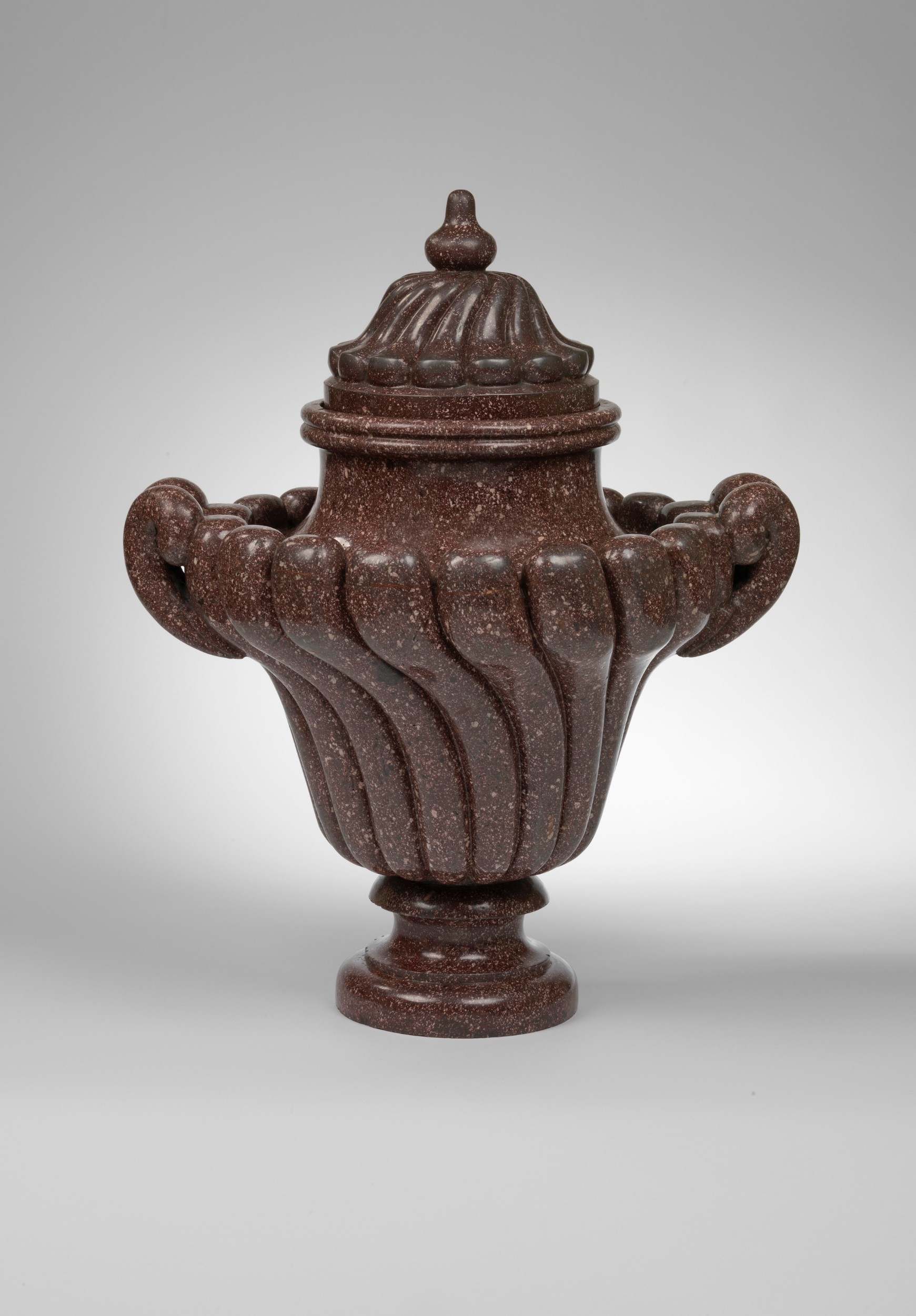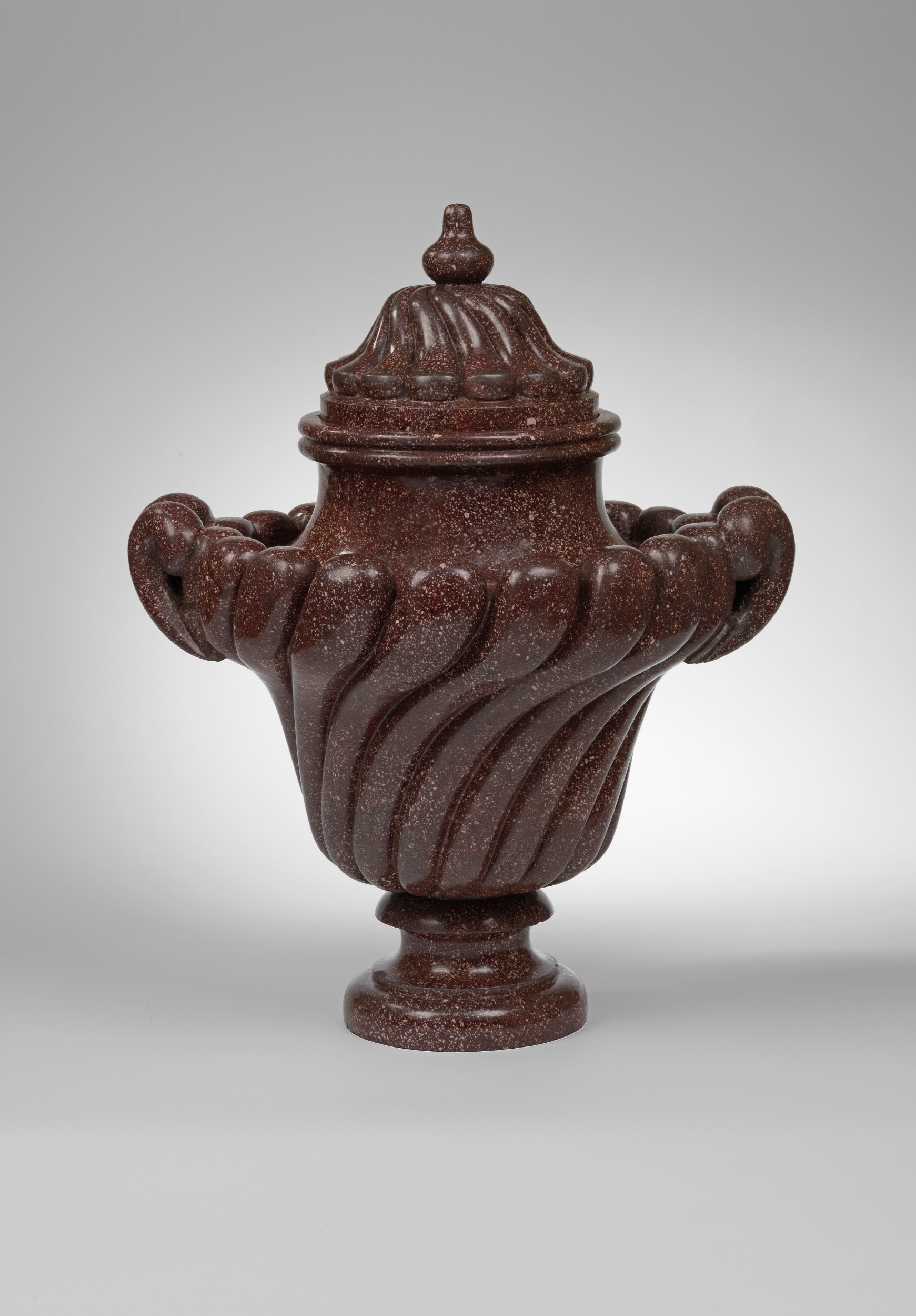

1650


In the Eternal City there was a supply of porphyry at second hand from ancient Rome in the form of abandoned columns, etc., from collapsed edifices. All of this originated from the quarries of Gebel Dokhan in the Eastern Desert of Egypt, which were opened in the 1st century AD and worked until the 5th. They were particularly exploited during the reigns of the Emperors Nero, Trajan and Hadrian, and the immensely durable, mottled purple stone was reserved for imperial use. It was quarried and worked by convict and slave labour, including many Early Christians, condemned for their belief. In the Renaissance, and especially during the ensuing Baroque period, the material was reworked by the stone-cutters (scarpellini) of Rome to suit the taste of their patrons, who wished to assimilate themselves with the prestigious culture of the ancient world.
The most likely candidate as the original purchaser/collector of the present splendid pair of porphyry vases in this distinguished family is Gaston Pierre Charles de Lévis-Lomagne (1699-1757), Marquis, and later Duc, de Mirepoix, Maréchal de France. Beginning life as a military man, he made two good marriages, and his second wife was an assiduous courtier. In 1738, as Ambassador of France to the court of the Holy Roman Emperor in Vienna, he was responsible for regaining possession of Lorraine for France. For this he was granted the Ordre du Saint-Esprit and later became Extraordinary Ambassador to London.
The Maréchal de France must have admired the similar vases in the Palace of Versailles when they were displayed in the new Galerie des Glaces, and – such was his prestige - would presumably have acquired the present, identical pair, from the same source as the King to provide an appropriately grand decoration for his own home.
PROVENANCE:
Collection of the Marquis de Lévis-Mirepoix, Château de Chaumois-lez-Bois, Côte d’Or, Burgundy, since 1732 (by descent from Gaston Pierre Charles de Lévis-Lomagne (1699-1757), Marquis, and later Duc, de Mirepoix, Maréchal de France). Later in the Château d’Etalant, Côte d’Or, belonging to another branch of the family.
| Dimensions | CM | Inches |
|---|---|---|
| Width: | 49 | 19.25 |
| Depth: | 49 | 19.25 |
| Height: | 57 | 22.5 |